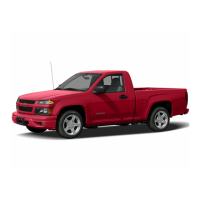
Do you have a question about the Chevrolet 2005 Colorado and is the answer not in the manual?
| Brand | Chevrolet |
|---|---|
| Model | 2005 Colorado |
| Category | Automobile |
| Language | English |
Details on adjusting manual and power front seats, including lumbar and heating features.
Information on proper usage, types, and importance of safety belts for all occupants.
Guidance on using child restraints, including LATCH system and proper installation.
Details on operating power seat controls for adjusting seat position and recline.
Explains how to use safety belts properly and what not to do, with cautions on riding in cargo areas.
Guidance for adults on wearing lap-shoulder belts correctly, with a note on child belt considerations.
Specific instructions for wearing a lap-shoulder belt in the driver's position.
How older children should use vehicle safety belts, with a recommendation for rear seats.
Importance of child restraints for infants and young children, and legal requirements.
Description of different types of child restraint systems like infant car beds, rear-facing, and forward-facing seats.
Recommendation to secure child restraints in the rear seat, with warnings about front passenger airbags.
Information on the top strap (tether) for child restraints and its proper anchoring.
Explanation of the LATCH system for easier child restraint installation, using vehicle anchors instead of safety belts.
Steps for installing child restraints using the LATCH system in crew cab vehicles.
Explanation of airbag deployment triggers, thresholds, and factors influencing inflation speed.
How to use the instrument panel switch to turn off the front passenger airbag, with conditions for infants and children.
Ensuring safety belts, buckles, retractors, and airbag covers are working properly and checking for damage.
Encouragement to use dealer service for genuine GM parts and trained technicians.
Guidance on inspecting and replacing restraint systems, including airbags and seat belts, after a crash.
Information on gasoline octane, specifications, and additives for proper vehicle maintenance.
How to check engine oil level, add oil, and the importance of using the correct type.
How the system calculates oil life and when to reset it after an oil change.
When to check and change automatic transmission fluid and filter based on driving conditions.
What DEX-COOL® coolant is and how to add it, with cautions about using plain water or other mixtures.
What to do if the engine overheats, including steam warnings and when to stop service.
Information about brake fluid level and reasons for its decrease.
How to identify worn brake pads and linings through sound and inspection.
Information about the maintenance-free battery and vehicle storage precautions.
Safe procedures for jump starting a vehicle using another vehicle and jumper cables.
How to replace exterior and interior bulbs, including headlamps and taillamps.
Importance of correct tire pressure and consequences of under- or over-inflation.
How to identify when tires need replacement based on treadwear indicators and damage.
What to expect during a tire blowout or slow leak and how to stop safely.
Step-by-step instructions for safely changing a flat tire, including vehicle stabilization.
General advice on cleaning vehicle surfaces, including fabric, vinyl, leather, and glass.
Proper methods for washing the vehicle to preserve paint finish, including soap choice and drying.
Importance of tire maintenance, including pressure, wear, and condition, with cautions about improper use.
Overview of the vehicle's electrical system, including fuses and circuit breakers.
Table of approximate fluid capacities and vehicle specifications in English and Metric.
How to operate door locks from inside and outside, including power locks and security features.
Overview of theft-deterrent features like Content Theft-Deterrent and Passlock®.
Guidance on new vehicle break-in, ignition positions, and starting the engine.
How the keyless entry system operates, including FCC compliance and basic functions.
Detailed steps for locking, unlocking, and using the panic feature of the remote keyless entry transmitter.
Procedures for starting the engine with automatic and manual transmissions, including safety features.
General overview of instrument panel components and their locations.
How to set, resume, increase, decrease, and end cruise control operation, with safety cautions.
Description of warning lights and gages that signal vehicle functions or problems.
What the airbag readiness light indicates about the airbag system's electrical status.
What the brake system warning light indicates about hydraulic brake system function.
What the check engine light indicates about the emission control system and potential problems.
How the DIC display provides information, warnings, and messages.
What various warning messages displayed on the DIC mean and how to acknowledge them.
General advice on safe driving practices, including defensive driving and awareness of road conditions.
Principles of driving defensively, including anticipating others and maintaining following distance.
Dangers of drinking and driving, effects of alcohol on driving skills, and BAC levels.
The three systems controlling vehicle movement: brakes, steering, and accelerator.
Explanation of perception and reaction time in braking, and factors affecting stopping distance.
How ABS works to prevent braking skids and what the warning light indicates.
Importance of proper vehicle maintenance for safety, performance, and the environment.
Notice regarding the necessity of scheduled maintenance for warranty coverage and vehicle condition.
Explanation of Maintenance I and II schedules based on the CHANGE OIL light and time intervals.
Table listing services required at specific mileage intervals, including emission control services.
Owner-performed checks and services at fuel fill, monthly, and yearly intervals for safety and performance.
How to check engine oil level and add oil if necessary, with notices about proper levels.
How to check engine coolant level and add DEX-COOL® mixture if needed.
Table listing recommended fluids and lubricants by name, part number, and usage.
Table of common replacement parts with GM and ACDelco part numbers.
Overview of customer assistance resources and contact points.
Steps to follow for resolving concerns with the dealership or Chevrolet.
Details on Chevrolet's roadside assistance services covered under warranty.
How to report safety defects to the US and Canadian governments and General Motors.
How to inform NHTSA about vehicle safety defects and the investigation process.
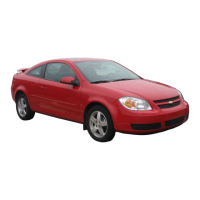
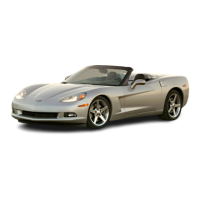
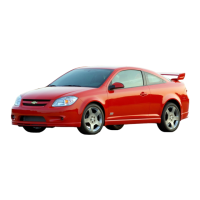

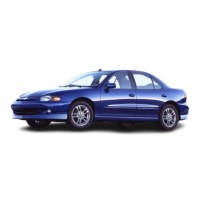
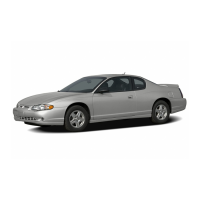


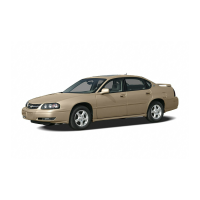
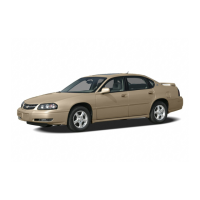
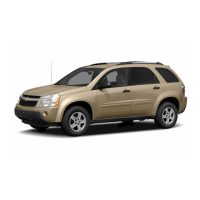
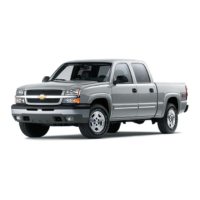
